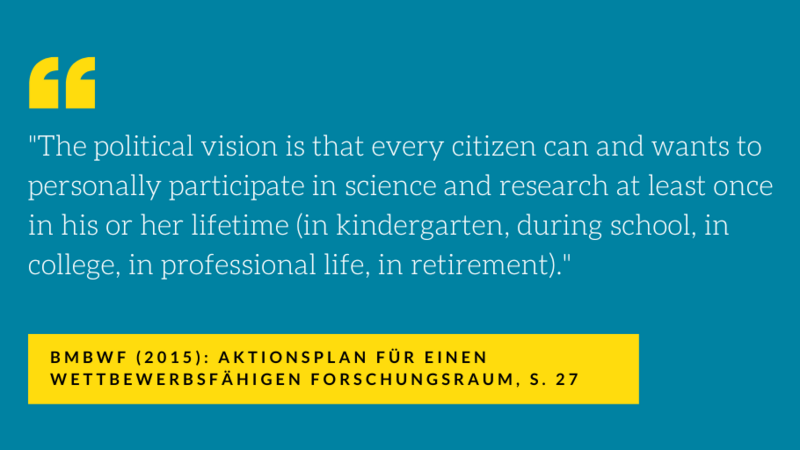More than 150 years ago, in 1856 to be precise, a network of citizens throughout Austria began to fill in paper sheets and send them to the Central Institute for Meteorology and Geodynamics (ZAMG). Their observations of the plant and animal world in the course of the seasons were noted on them. When did the first snowdrops bloom? When did apricots ripen? The data were then published in yearbooks.
Nowadays, citizen science not only takes place in research institutions and museums, but has also found its way into many schools.
When citizen science comes into schools
A budget of around 35 million euros and more than 100,000 schoolchildren with direct insight into research processes - this is how the Sparkling Science research funding program can be described in a nutshell. In 2007, the Austrian Federal Ministry of Education, Science and Research (BMBWF) decided to launch this citizen science program, which is still unique in Europe. In addition to promoting young scientists, the goal was above all to break down barriers between science and schools.
- Over the course of twelve years, almost 300 research projects in which schoolchildren worked side by side with researchers to answer scientific questions were funded.
- A total of 200 research institutions, 535 schools and 185 partners from industry and society were involved.
Due to its great success, the BMBWF relaunched the Sparkling Science funding program in 2021 under the title Sparkling Science 2.0. In addition to school classes, the current citizen science projects now also involve other interested citizens.
The OeAD Center for Citizen Science
In order to further deepen the dialogue with society, the Ministry of Science sent another strong signal in Austria in 2015: the establishment of the OeAD Center for Citizen Science as an information, advisory and service center for citizen science. One of the first projects implemented by the Center together with the BMBWF and FWF was the Top Citizen Science funding initiative. In total, 31 ongoing Sparkling Science and FWF projects received funding for a citizen science expansion project from 2015 to 2017. Following three joint calls for proposals, the FWF has since continued the initiative.

The rise of citizen science in Austria
In addition to the BMBWF, OeAD and FWF, there are a number of research institutions and museums that are involved in citizen science.
Since 2017, the University of Natural Resources and Applied Life Sciences Vienna has coordinated the Austria-wide Citizen Science Network Austria with the associated platform Österreich forscht, which was set up back in 2014. There, those interested can find numerous citizen science projects from Austria. The network has numerous working groups (WGs) on various topics such as open science, law and biodiversity. The OeAD Center for Citizen Science is also a member and coordinates the working group "Citizen Science at/with schools".
In addition, the Universities of Salzburg, Vienna and Innsbruck as well as the Natural History Museum in Vienna and the Museum inatura in Dornbirn have their own citizen science focus.
In 2017, the OeAD Center for Citizen Science began establishing a network of Citizen Science and Young Science contact persons at Austrian universities, universities of applied sciences, universities of education and non-university research institutions. These serve as contact persons within and outside the institution. At regular network meetings organised by the OeAD they share their various experiences. A training series for contact persons has been taking place since 2023.
